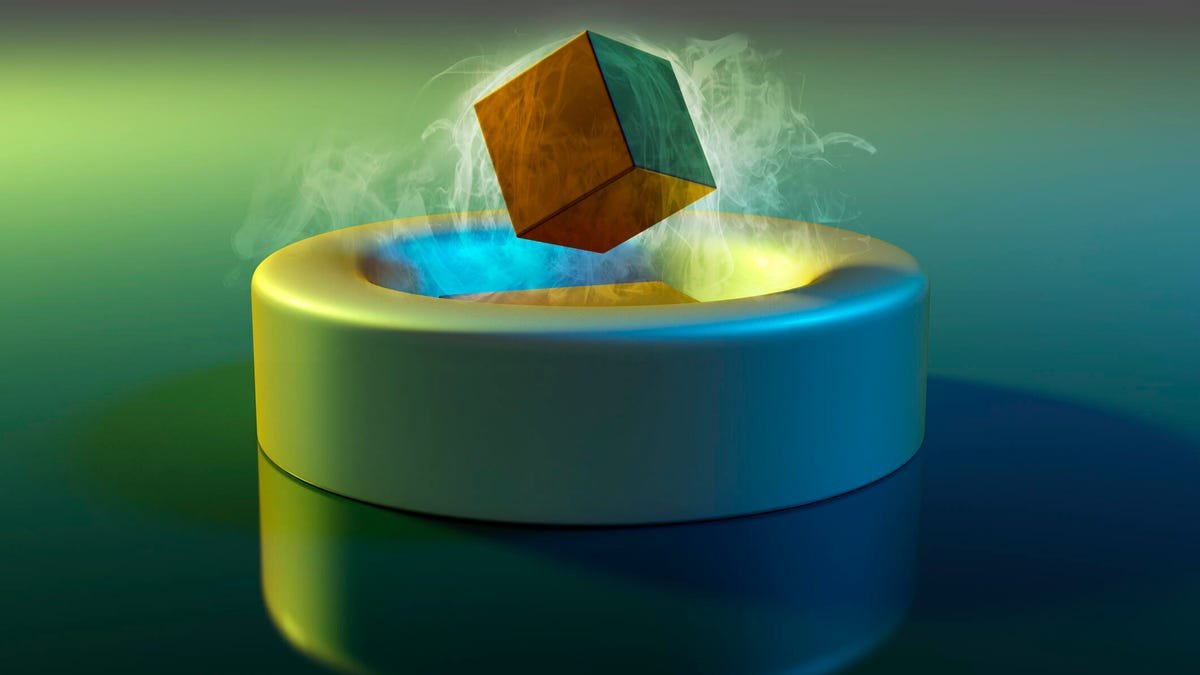
LK-99 Superconductor: Maybe a Breakthrough, Maybe Not So Much
[ad_1]
When South Korean scientists in late July reported a potential breakthrough in superconductors, their claims uncorked waves of both excitement and skepticism as researchers around the world rushed to replicate the experiments.
Such a superconductor – working at room temperature and ambient pressure – is one of the holy grails of materials science, a development that dreamers suggest could maximize the efficiency of our energy grids and supercharge fusion energy production, speed up progress on quantum supercomputers or help usher in an era of superfast transport.
Right now, though, the story of the LK-99 superconductor is all about what’s going on in laboratories.
On July 22, the physicists in South Korea uploaded two papers to arXiv, a repository for preprint research – the kind that has yet to be peer-reviewed and published in a scientific journal. It’s basically like uploading a first draft of your work. The researchers claimed they had produced the first room-temperature superconductor with a “modified lead-apatite structure” doped with copper and dubbed LK-99.
Part of the “proof” the team provided was a video showing the compound levitating over a magnet, a key characteristic of superconducting materials.
The bold claims made a monumental splash with experts in the field.
“The chemicals are so cheap and not hard to make,” said Xiaolin Wang, a material scientist at the University of Wollongong in Australia. “This is why it is like a nuclear bomb in the community.”
But what happened in that lab in South Korea is just a very first step in figuring out whether the results truly have practical implications for technology and its role in our lives. We need more data, and there’s reason to be cautious.
How superconductors work
A bona fide room-temperature superconductor would be a big deal, worthy of fanfare. Modern materials we use to conduct electricity, like the copper wiring supplying energy to your home, are inefficient. As electrons bumble down the wire, they bump into the atoms of the material, creating heat and causing energy to be lost. This is known as electrical resistance and sees up to 10% of electricity wasted as it travels through transmission lines to homes. Energy loss happens in our electronic devices as well.
But if wires and transmission lines were to be made from a superconductive material, you could practically negate those losses. The electrons form pairs as they travel through the material and don’t bump into the atoms so much, enabling them to flow freely.
Superconductive materials already exist and are in use in various applications, like MRI machines, around the world. However, these require extremely low temperatures (approaching absolute zero at around minus 459 degrees Fahrenheit) or extremely high pressures (beyond 100,000 times the atmospheric pressure).
Meanwhile, a superconducting magnetic levitation system is being built by Central Japan Railway to take passengers between Tokyo and Nagoya. The SCMaglev train uses rubber wheels to get up to speeds of around 93 miles per hour before the superconducting magnetic system takes over. It should be able to reach speeds of 311 mph.
The process requires a superconducting niobium-titanium alloy, which is cooled to minus 452 degrees Fahrenheit with liquid helium.
A room-temperature superconductor like LK-99 would make this a far cheaper endeavor and prevent the need to accumulate helium. (Despite some concerns in the media over the last few years, we’re not running out of helium anytime soon, but it’s produced in only a few countries, so problems with supply can cause massive price spikes.)
Skepticism about the LK-99 results
Wang and other superconductivity experts have been skeptical about the original LK-99 experiment, pointing out inconsistencies in the data. He notes the results should not be overhyped “until more convincing experimental data are provided.” Last weekend, his team at the University of Wollongong began working on replicating the results, but they’ve been having trouble with sample fabrication.
In an interview with Science magazine, Michael Norman, a physicist at Argonne National Laboratory, was blunt. He said the South Korean team “come off as real amateurs.”
Across X, the website formerly known as Twitter, LK-99 has been trending for days. It has officially crossed over into Meme Territory – everyone’s talking about “floaty rocks” – and generated some outlandish claims, with many noticing the abundance of accounts quickly morphing from promoting AI investments to suddenly backing stocks in superconductors. For instance, the American Superconductor Corporation’s shares have doubled since July 27.
Even the CEO of ChatGPT maker OpenAI, Sam Altman, weighed in, joking, “love these emails from recruiters asking for 2+ years of experience with lk-99.”
The skepticism around LK-99 is well-founded. Many teams have claimed to discover room-temperature superconductors over the years. Most of these claims have not been able to withstand scientific scrutiny.
For instance, in 2020, a team led by Ranga Dias, a physicist at the University of Rochester in New York, published evidence of a room-temperature superconductor, in the prestigious journal Nature. The article was retracted in September 2022 after questions were raised regarding the manner in which the data in the paper was processed and analyzed. The authors maintain the raw data provides strong support for their claims, but replication of their experiment has not been achieved.
What next for LK-99
So what does LK-99 mean for you? At this very moment, probably not a lot, unless you want to fall down a physics rabbit hole on X and get caught up in the moment. In the near future, maybe not a lot, either.
We’re still in the very early days of replicating the LK-99 experiments, but things aren’t looking great. Two studies by two separate research groups and posted to arXiv on Monday were not able to replicate the South Korean research. Some of the superconductivity behaviors of the material have been seen in very tiny samples by Chinese researchers, Wang noted.
Science is generally a slow process. Confirming the work of the South Korean team was predicted to take a week, but with excitement already fever pitch, theoretical studies rushed to try to explain LK-99’s characteristics.
Sinéad Griffin, a physicist at the Lawrence Berkeley National Laboratory, provided some analysis of LK-99’s abilities using supercomputer simulations. (Griffin’s post on X was accompanied by a meme of Barack Obama dropping the mic.) This study was also posted to arXiv as a preprint.
Physicists who weighed in on Griffin’s work were cynical about the mic-drop reference and weren’t convinced it provided any solid proof for superconductivity. Griffin herself clarified her results in an X thread on Wednesday, stating it neither proved nor gave evidence of superconductivity in the material, but did show interesting structural and electronic properties that have features in common with high-temperature superconductors (that is, well above minus 452 Fahrenheit, but way, way, way below room temperature).
Even if LK-99 proves to be a reliable superconductive material, translating science to technology can be an even slower process. Reliably producing the material could take many years, and Griffin’s theoretical work also shows it might be difficult to synthesize the material.
LK-99 doesn’t look like it will be the holy grail but it may be an interesting material in its own right, opening up the possibilities to search for room-temperature superconductors in new, unexpected ways. If it did lead to a room-temperature superconductor, then the possibilities really open up.
Giuseppe Tettamanzi, a senior lecturer at the University of Adelaide’s school of chemical engineering, notes that scientists have been thinking about replacing the power grid’s copper cables with superconducting cables for a very long time – a switch that could provide huge energy savings. He also mentions the benefits to quantum computers and transport.
“The sky is the limit here,” he said.
Watching science in action is thrilling and the passion for LK-99 quite a nice change on the X feed, at least for me. But science, in action, takes time and it shouldn’t jump to conclusions about the world-changing ramifications of a potential superconductive material. So now we wait for the replicators to get to work.
[ad_2]
Source link


